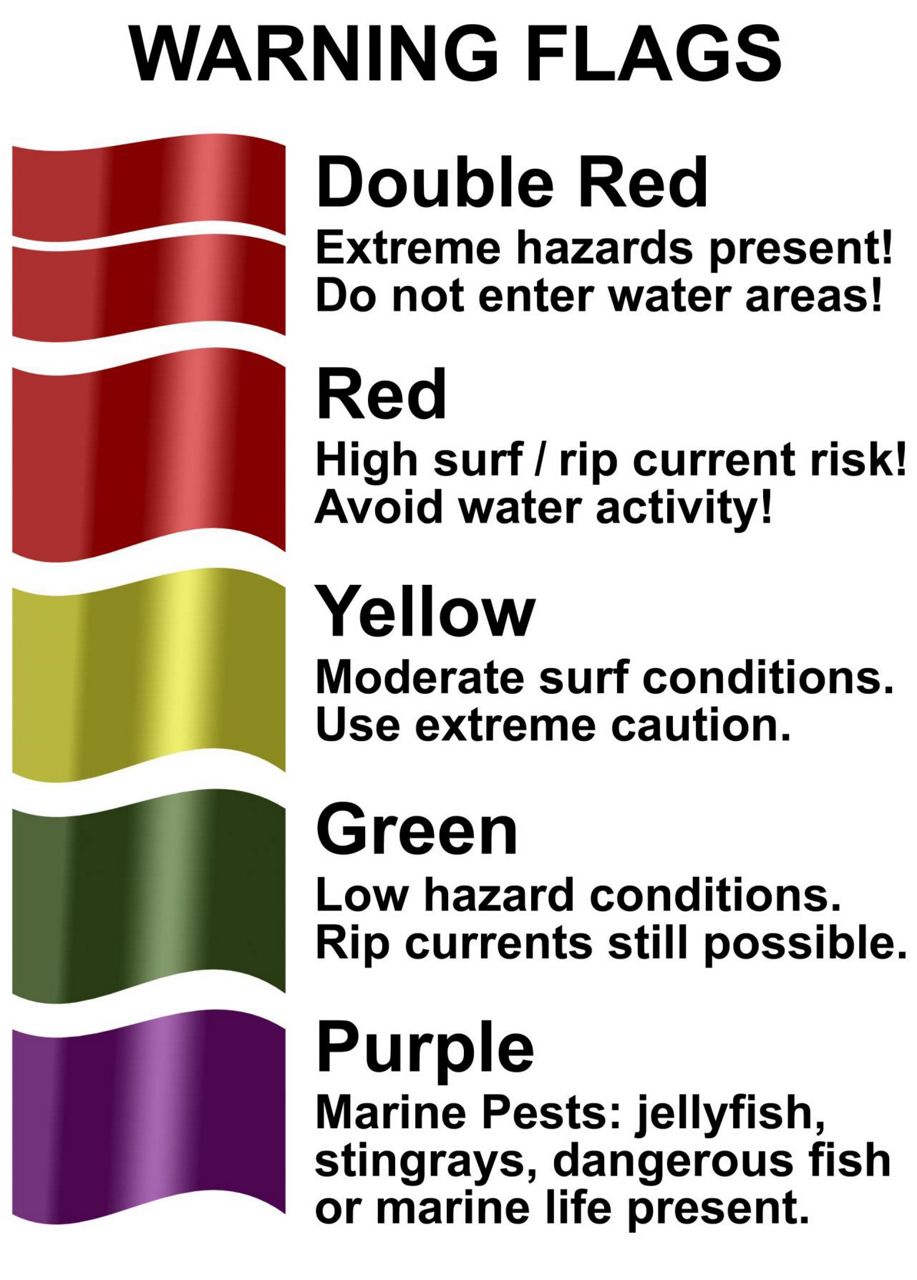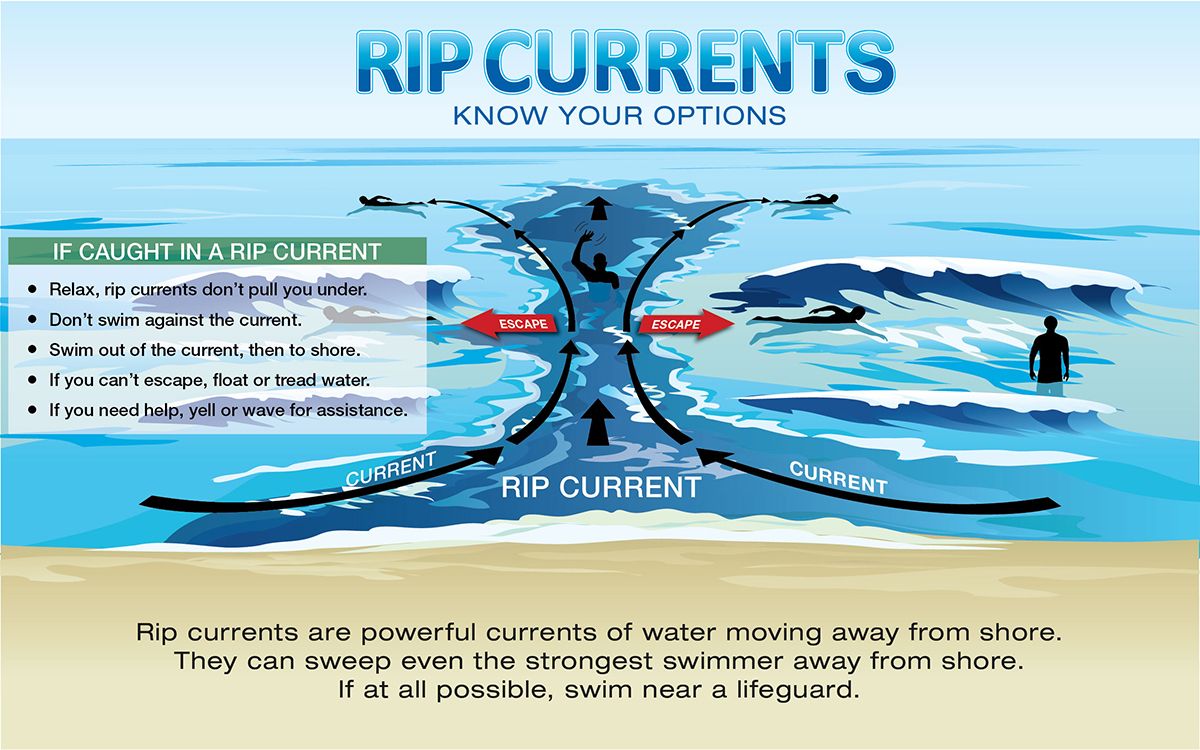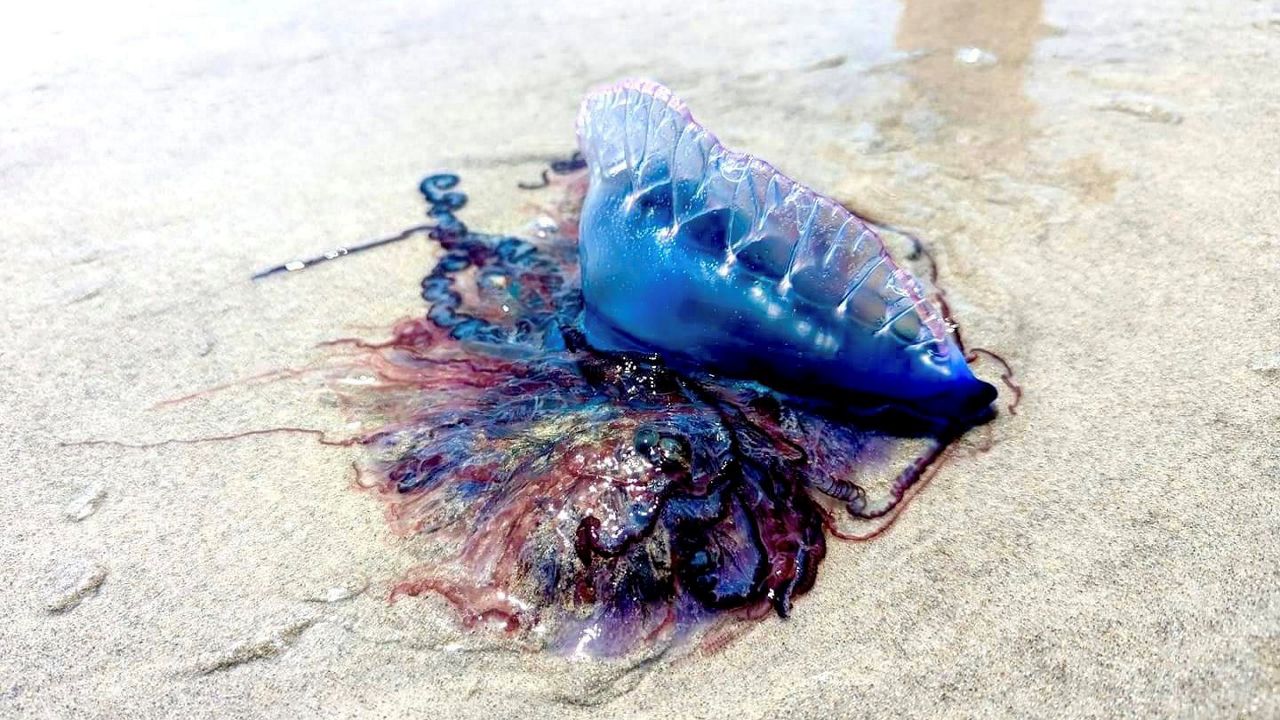The rip current risk at North Carolina beaches is lower for Thursday compared to the last several days, but there's another danger swimmers should be aware of this week.
Thursday is the first day in over a week for a low rip current risk at all North Carolina beaches.

While most beach goers will see a green flag flying to indicate the lower risk, a purple flag may be flown at some beaches.

The purple flag represents a danger in the water from marine life.
Several North Carolina beaches have recently reported numerous stings from Portuguese man o' war.
In a recent interview with Spectrum News 1, Chief Allen Wilson of the Surf City Fire Department described the danger, "a man o' war can actually still sting you, you know, after a week of it being on the beach," Wilson said.
The tentacles of the man o' war can stretch to 100 feet long, and the body could be on the beach but the tentacles could lie in other areas stretched out.
The man o' war is dangerous but not deadly, unless you're allergic to its venom.
"If stung by a man o' war, the first thing you want to do is really try to rinse it off with as much saltwater as you can," Wilson said.
He says rinsing the affected area with vinegar will help remove the tentacles. He also warns to wear gloves or use another object and not your bare hands to remove the tentacles.
While being mindful that there are dangers of swimming in the ocean that do not exist in a swimming pool, beach goers should be aware that the threat for rip currents could increase again by this coming weekend.
Lifeguards have reported over 300 rip current rescues since this past weekend at beaches in North and South Carolina.
A 58-year-old drowned at Fort Fisher on Saturday afternoon. According to a report from the National Weather Service (NWS), the man was attempting to rescue children who were caught in a rip current.
Statistics from the NWS indicate that there were 175 rip current fatalities along the Carolina coast from 2000 to 2020. Of those fatalities, 27% were "good samaritans" attempting to rescue others.
If you get caught in a rip current, lifeguards recommend swimming in a direction parallel to the shore. Do not swim against the current. Once free of the rip current, swim back to shore at an angle.

*A correction to the day the man drowned was made, previously stating it occurred on Sunday*
Our team of meteorologists dives deep into the science of weather and breaks down timely weather data and information. To view more weather and climate stories, check out our weather blogs section.









